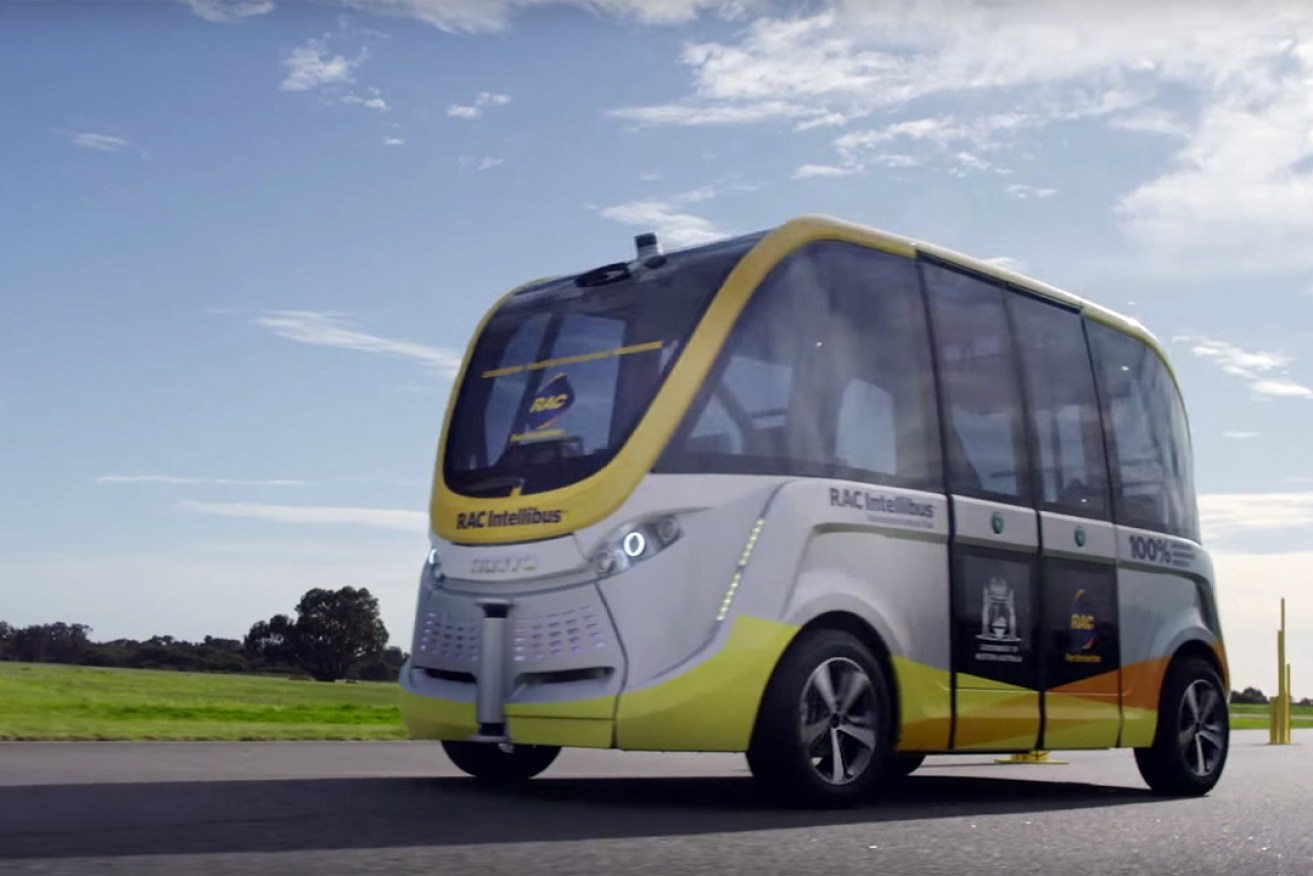Council, govt in talks on CBD driverless bus fleet
The city council and the State Government are in talks about a driverless bus fleet that could service multiple routes across Adelaide’s CBD, InDaily can reveal.


The RAC Intellibus on trial in Western Australia. A fleet of similar vehicles could service Adelaide's CBD. Image: RAC/YouTube
Council CEO Mark Goldstone told InDaily he had been in talks with State Government over the past few months about using driverless buses in Adelaide’s CBD.
He said several city routes were being considered for driverless buses, including from Victoria Square to the New Royal Adelaide Hospital, from Adelaide Oval to the Central Market and within Adelaide Zoo and the Botanic Gardens.
He said he could see “a future city of Adelaide benefiting from numerous small autonomous buses operating throughout the CBD, which could provide a flexible, reliable and innovative solution to public transport in the city”.
“It is clear there are numerous potential routes driverless buses could service around the CBD,” he said.
“In recent months, I have been actively working with both State Government and the Australia Driverless Vehicles Initiative (ADVI) representatives who have a keen interest in seeing such new technology operating in our city.”
Goldstone said he planned to present the concept of autonomous buses to councillors “when [finalised] location opportunities have been identified and operational and safety aspects are confirmed”.
Australia’s first driverless shuttle bus trial began in South Perth mid-last year. InDaily understands Goldstone will travel to WA this month, or next, to inspect it.
A State Government spokesperson confirmed it was working with the city council, other local government bodies such as the City of Playford and interstate partners “ regarding the deployment of driverless shuttles in South Australia”.
“There are a number of proposals for multiple routes, both on and off road,” the spokesperson said.
“They vary in scale from driverless shuttles to smaller pods such as the RDM Pod launched by ADVI in October 2016.”
Late last year, the State Government announced a $10 million Future Mobility Lab Fund, to provide grants to demonstrate, develop, or contribute to research on new vehicle technologies.
“We are currently accessing a number of submissions that include shuttle trials as part of [the fund],” the spokesperson told InDaily this morning.
“Obviously a full assessment regarding community safety is paramount, including the speed limiting of these vehicles – which is currently an average of 25km/h in all global trials.”
Executive director of the ADVI Centre for Excellence, Rita Excell, said her organisation had been been providing expert advice to the city council, surrounding councils and the State Government regarding potential shuttle routes – though she would not reveal details of their discussions.
However, she said the main application of driverless buses in the city of Adelaide would be in taking commuters direct to their final destination after using other public transport, and as an alternative to walking.
“You could get off the tram and use one of these shuttles to get to your [final] destination,” she said.
“It’s a proven technology that’s been applied.
“We’re keen to see public transport providers seeing this as the future.”
Excell said that with grants from Future Mobility Lab Fund due to be announced early this year, “we’d expect they could have shuttles in South Australia as soon as the middle of next year”.
The RAA’s senior manager of mobility and automotive policy, Mark Borlace, said that current driverless bus technology had to operate at slow speed, but the technology had huge potential.
He said the number of serious and fatal crashes could be brought down to five per cent their current rate in the future, if there is a significant general take-up of driverless vehicles.
He added that it would be possible to send “twice the volume of traffic down the freeway” with driverless cars, which could travel much closer to the vehicle in front and brake instantly.
Borlace said there was the potential for driverless technology to put low-skilled workers out of jobs, but that new jobs would also be created.
A September 2016 ADVI position paper estimates 7,500 direct jobs could be created, assuming an ever-increasing rate of driverless vehicle sales, over the next 50 years.




